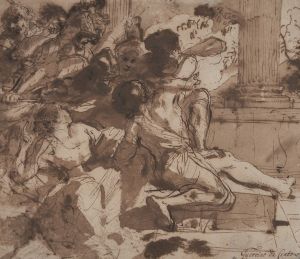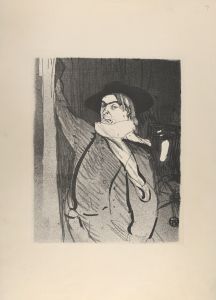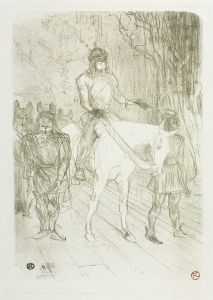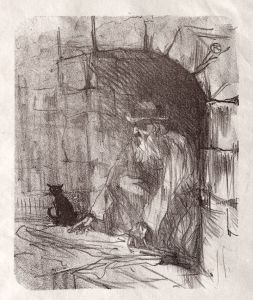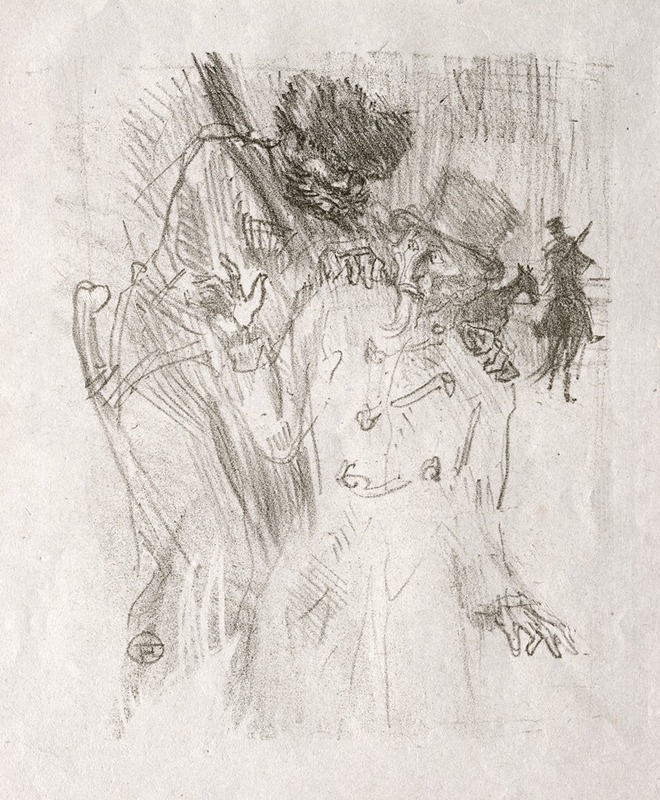
Au pied du Sinaï: Arrestation de Schlomé Fuss
A hand-painted replica of Henri de Toulouse-Lautrec’s masterpiece Au pied du Sinaï: Arrestation de Schlomé Fuss, meticulously crafted by professional artists to capture the true essence of the original. Each piece is created with museum-quality canvas and rare mineral pigments, carefully painted by experienced artists with delicate brushstrokes and rich, layered colors to perfectly recreate the texture of the original artwork. Unlike machine-printed reproductions, this hand-painted version brings the painting to life, infused with the artist’s emotions and skill in every stroke. Whether for personal collection or home decoration, it instantly elevates the artistic atmosphere of any space.
Henri de Toulouse-Lautrec, a prominent French painter and illustrator, is renowned for his vivid portrayals of Parisian nightlife in the late 19th century. However, his work "Au pied du Sinaï: Arrestation de Schlomé Fuss" is less known and not as widely documented as some of his other pieces. This painting, like many of Toulouse-Lautrec's works, reflects his keen interest in capturing the human condition and societal nuances.
Henri de Toulouse-Lautrec was born in 1864 in Albi, France, into an aristocratic family. Despite suffering from health issues that stunted his growth and led to physical disabilities, he pursued a career in art, moving to Paris in 1882 to study. His unique style, characterized by bold colors and expressive lines, was influenced by Impressionism and Post-Impressionism, as well as Japanese woodblock prints.
"Au pied du Sinaï: Arrestation de Schlomé Fuss" is a lesser-known work, and there is limited information available about its creation and history. The title suggests a narrative scene, possibly depicting an arrest, which aligns with Toulouse-Lautrec's interest in storytelling through art. His works often explored themes of human emotion, societal roles, and the complexities of urban life, frequently set against the backdrop of Parisian society.
Toulouse-Lautrec's oeuvre is celebrated for its depiction of the bohemian lifestyle of Montmartre, a district in Paris known for its vibrant nightlife and artistic community. He often painted scenes from cabarets, dance halls, and brothels, capturing the essence of the Belle Époque era. His subjects included famous performers, dancers, and prostitutes, whom he portrayed with empathy and insight.
While specific details about "Au pied du Sinaï: Arrestation de Schlomé Fuss" are scarce, it is possible that the painting reflects Toulouse-Lautrec's interest in marginalized individuals and moments of tension or drama. His ability to convey emotion and narrative through composition and color is evident in his more famous works, such as "At the Moulin Rouge" and "The Dance at the Moulin Rouge."
Toulouse-Lautrec's legacy is marked by his innovative approach to art and his contribution to the development of modernism. Despite his relatively short life—he died in 1901 at the age of 36—his impact on the art world was significant. His works continue to be celebrated for their technical skill, emotional depth, and unique perspective on society.
In conclusion, while "Au pied du Sinaï: Arrestation de Schlomé Fuss" is not as well-documented as some of Toulouse-Lautrec's other paintings, it is likely to embody the same qualities that define his artistic legacy. His ability to capture the complexities of human experience and the vibrancy of Parisian life remains a testament to his enduring influence in the art world.






